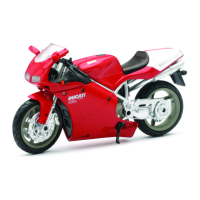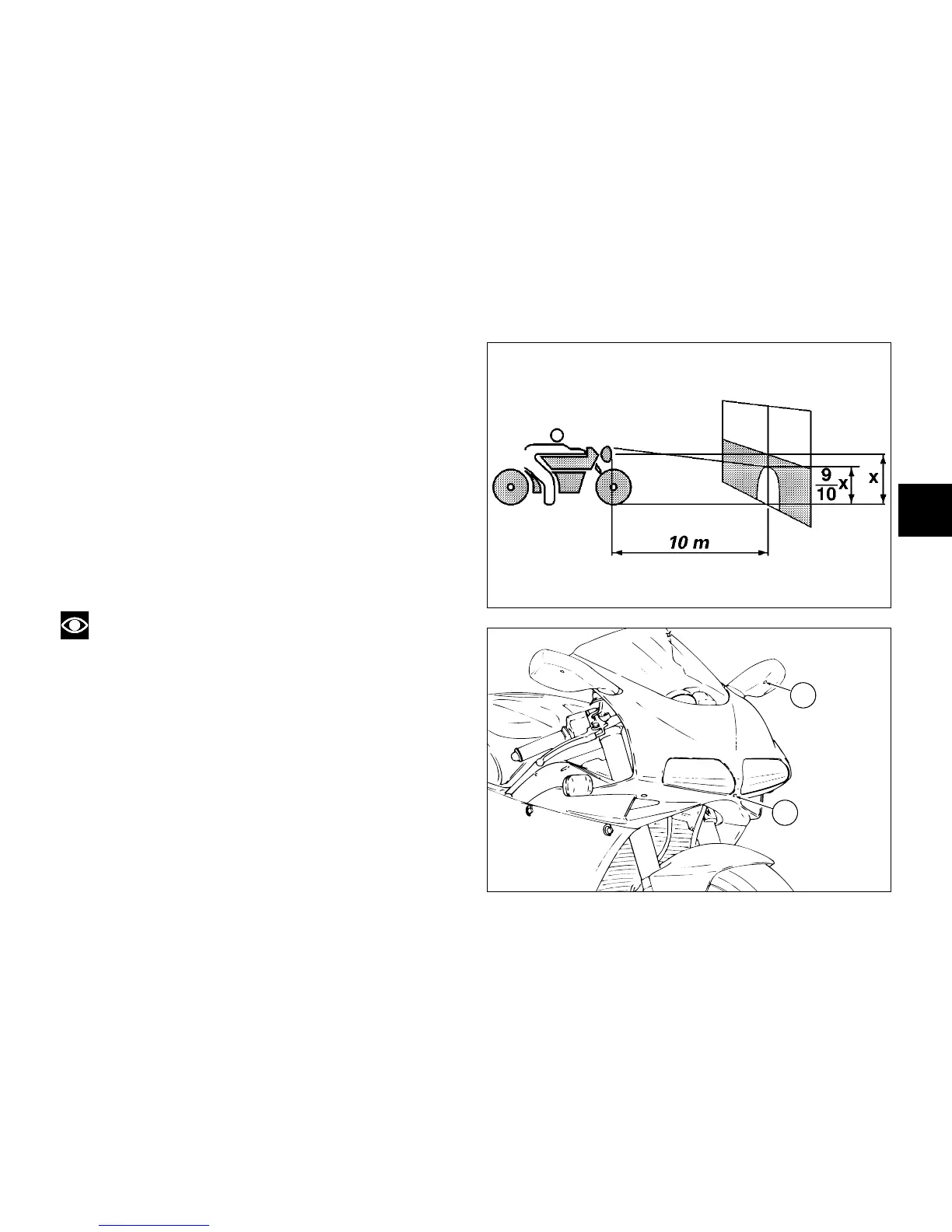
 Loading...
Loading...
Do you have a question about the Ducati 998S and is the answer not in the manual?
| Displacement | 998 cc |
|---|---|
| Bore x Stroke | 100 mm x 63.5 mm |
| Compression Ratio | 11.4:1 |
| Transmission | 6-speed |
| Frame | Tubular steel trellis |
| Front Brakes | 2 x 320 mm discs, 4-piston calipers |
| Tire Front | 120/70 ZR17 |
| Tire Rear | 190/50 ZR17 |
| Engine Type | Liquid-cooled, 4-stroke, L-twin, Desmodromic DOHC, 4 valves per cylinder |
| Torque | 97 Nm @ 8000 rpm |
| Fuel System | Electronic fuel injection |
| Front Suspension | Showa 43mm upside-down fork, fully adjustable |
| Rear Suspension | Showa monoshock, fully adjustable |
| Rear Brakes | 220 mm disc, 2-piston caliper |
| Fuel Capacity | 17 liters |
Essential precautions and information for safe motorcycle operation.
Diagram identifying the position and function of all motorcycle controls.
Details on levers, pedals, switches for operation and adjustment.
Explanation of tachometer and various warning/indicator lights.
Function of the engine stop switch for running and emergency stops.
How to use the throttle twistgrip and front brake lever.
Location of steering damper and front/rear suspension adjusters.
Speed limits and gentle braking advice for the initial 1000 km.
Recommendations for the 1000-2500 km period, with higher speed limits.
Maximum speed limits and maintenance adherence after running-in.
Essential checks before riding: fuel, oil, brakes, controls, lights, stand.
Procedure for starting the engine in normal ambient temperatures.
Steps for starting from a stop and shifting gears.
Guidance on using both brakes and safe braking practices.
Procedure for checking engine oil level via the sight glass.